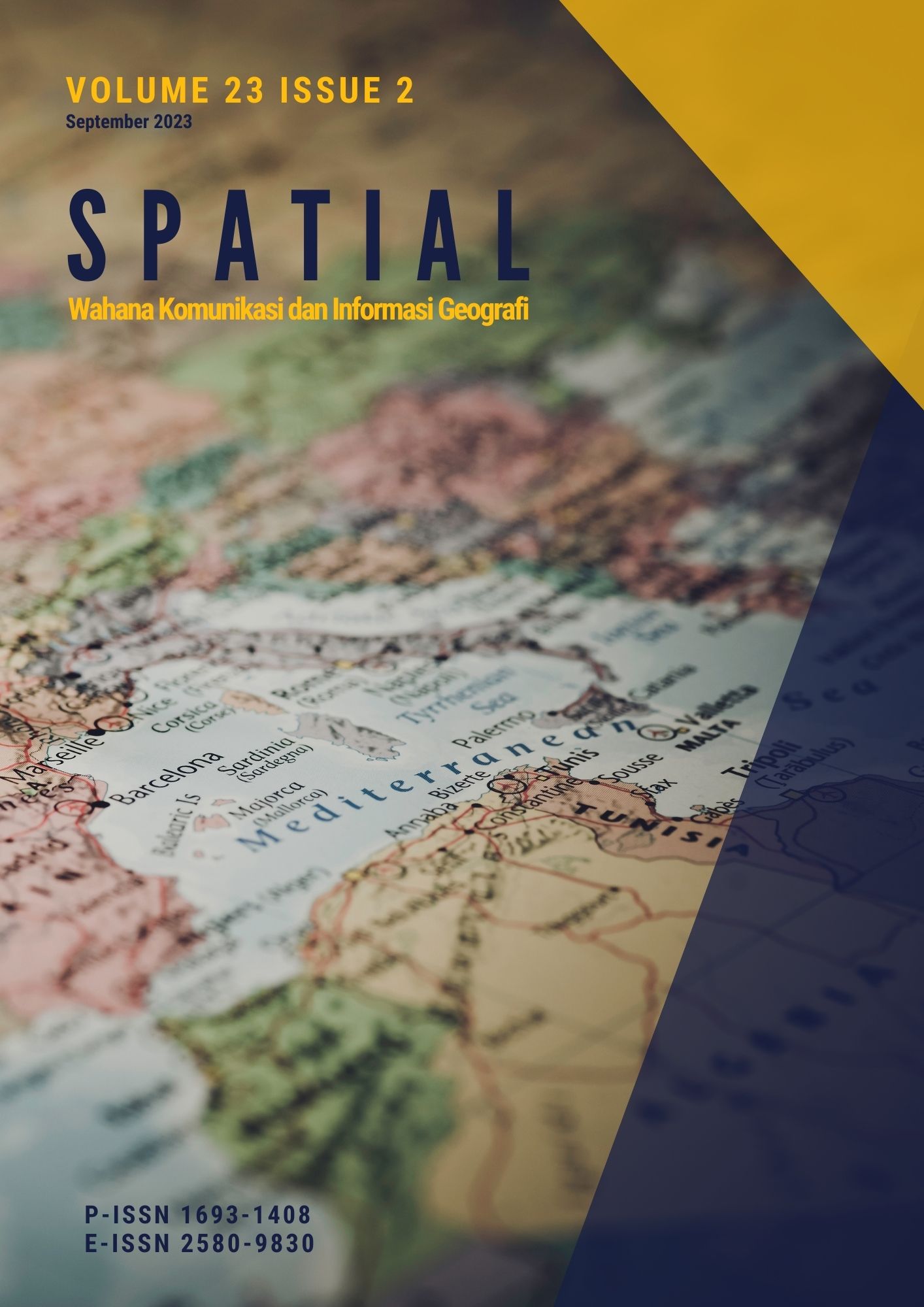Perbandingan Algoritma Classification and Regression Tree (CART) dan Random Forest (RF) untuk Klasifikasi Penggunaan Lahan pada Google Earth Engine
DOI:
https://doi.org/10.21009/spatial.232.09Keywords:
Klasifikasi Penggunaan Lahan, Google Earth Engine, Classification And Regression Tree, Random Forest, Bengawan SoloAbstract
Land Use and Land Cover (LULC) change are increasing along with the population growth and their activity-followed. Quick and accurate analyses are neded to support the land use management. One of the effective and accurate platforms to generate LULC classification maps are Google Earth Engine (GEE), a cloud-based geospatial by utilising multi-spectral imagery and various processing algorithms.There are at least two LULC classifier methode using the decision tree algorithm: Classification And Regression Tree (CART) and Random Forest (RF). Differences classifier method are allowed to produce difference accuracy level. Few studies have explained how the accuracy level and effectiveness of these two methods.This research aims to identify an accurate and effective LULC classifier method by comparing the accuracy values of the two methods on Landsat 8 and Sentinel 2A imagery. The RF algorithm shows higher accuracy result than the CART algorithm on both Landsat 8 and Sentinel 2A images. The most optimal sample proportion is 60:40 with higher accuracy result on both image and classifier algorithm. The Landsat 8 imagery with sample proportion 60:40 shows the highest accuracy result (OA=93,94 and Kappa=0,927).
Downloads
Published
How to Cite
Issue
Section
License
Copyright (c) 2023 Faiz Al Farikhi, Retno Widodo Dwi Pramono

This work is licensed under a Creative Commons Attribution 4.0 International License.
An author who publishes in the journal SPATIAL Wahana Komunikasi dan Informasi Geografi agrees to the following terms:
Author retains the copyright and grants the journal the right of first publication of the work simultaneously licensed under the Creative Commons Attribution 4.0 License that allows others to share the work with an acknowledgement of the work's authorship and initial publication in this journal
Author is able to enter into separate, additional contractual arrangements for the non-exclusive distribution of the journal's published version of the work (e.g., post it to an institutional repository or publish it in a book) with the acknowledgement of its initial publication in this journal.
Author is permitted and encouraged to post his/her work online (e.g., in institutional repositories or on their website) prior to and during the submission process, as it can lead to productive exchanges, as well as earlier and greater citation of the published work (See The Effect of Open Access).
This work is licensed under a https://creativecommons.org/licenses/by/4.0/









